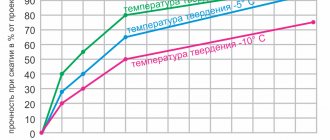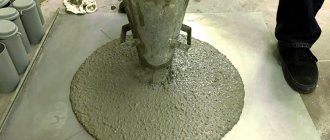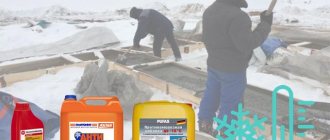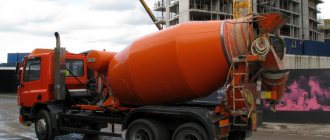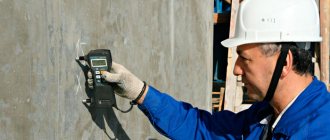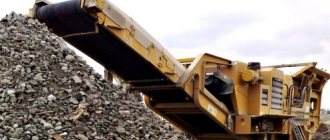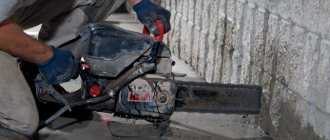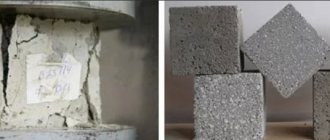Almost any large-scale construction process involves the use of concrete mixtures. The mortar serves as the basis for the formation of the foundation; walls are built from it, floors are made and other tasks are carried out. At the same time, the external ugliness of concrete does not bother anyone - it is skillfully masked with facing materials, so this nuance does not cause any special problems. Nevertheless, the Hungarian engineer Aron Loshontsi decided to add one more quality to the list of characteristics of the gray material - light transmittance. This is how Illumicon transparent concrete appeared, which has many differences from traditional mixtures. This applies not only to the appearance, but also to the original structure due to the manufacturing technology.
Concrete composition
The basis is still an ordinary mortar prepared from a fine-grained cement mass. The technology itself revolutionized the idea of concrete only due to the unusual combination of a basic, familiar mixture and fiber-optic fiber. These are threads that are used in telecommunication networks. It is through the combination of these components that transparent concrete is formed. The composition of the basic solution also includes the use of cement and water in accordance with technical requirements. As for fibers, their parameters are selected according to special criteria.
As a rule, technologists do not recommend preparing masses in which the proportion of optical elements exceeds 5%. This affects the strength and durability of the material. On the other hand, the very quality that determines transparency depends on the percentage of fiberglass content. Most often, transparent concrete is produced using fibers whose thickness does not exceed 2 millimeters.
Concrete Canvas: innovative concrete
May 26, 2020
The history of concrete goes back more than a millennium. Already in ancient civilizations it was successfully used in mass construction and in the creation of monumental buildings of complex shape. During its evolution, concrete has undergone many modifications and improvements, and today the search for various variations of modernizing concrete materials and improving their properties is still ongoing.
In the early 2000s, British students at the Royal College of Art Peter Brewin and Will Crawford invent a unique concrete-based technology. For lining surfaces, they propose using fabric impregnated with a dry solution with a waterproof lining, which will later be called a concrete sheet. Already in 2005, Concrete Canvas Ltd. was created to launch the production of this technology.
Almost immediately the technology gained recognition in the construction market. Experts note its advantages compared to traditional methods; the concrete sheet receives prestigious international awards, including winning the Material Connection Midiem Development Award in 2009, the Innovation Award at Railtex 2013, the MacRobert Award 2013, etc. d.
The composition of the canvas includes a three-dimensional fibrous matrix, which contains a specially selected dry concrete mixture. One of the surfaces is made of polyvinyl chloride (PVC), which makes the material waterproof.
The flexible fabric hardens when hydrated to form a durable, thin, fire-resistant and waterproof layer. Moreover, hydration can be done either by spraying or immersing in water. After 24 hours, the canvas reaches 80% strength. Thanks to these features, the concrete sheet does not require mixing and, accordingly, no additional equipment, which significantly reduces labor and energy costs. Laying the canvas can be done with minimal preparation: the material can be cut and fixed using hand tools.
Compared to traditional construction methods, concrete decking is faster, easier and more cost-effective to install. In 1 hour, a team of three workers can lay up to 200 square meters. m. This is almost 10 times faster than when working with conventional concrete solutions.
The canvas is also supplied in portable (compact) rolls, which allows concrete to be laid in areas with limited access. Up to 200 sq.m. can be delivered on one pallet. m of concrete sheet, which significantly reduces transport logistics and saves storage space on the site.
Due to its flexibility and pliability, the concrete sheet easily spreads along an uneven profile, acquiring its outline, due to which additional work (to level the soil) is minimized. The canvas is attached to the surface using conventional anchors or steel stakes with caps.
Conducted studies have revealed a high degree of wear resistance of this material. Cyclic tests of freeze-thaw, rain chambers and exposure, during which the canvas gave the least degradation, showed that the service life of the canvas in the British climate is more than 50 years.
The excellent low-temperature characteristics of the concrete sheet are confirmed by tests of 200 freeze-thaw cycles. Currently in Russia the official distributor of Concrete Canvas Ltd. Additional tests of 300 freeze-thaw cycles are being carried out in order to confirm the degree of wear resistance of the fabric declared by the manufacturer, but in the Russian climate. High fire resistance allows the canvas to be used as a fire retardant material.
Compared to conventional concrete based on Portland cement, the concrete sheet is highly resistant to chemical compounds: sulfates, sulfate water, ground and sea water, waste water, chlorides, tanning and vegetable oils, as well as most mineral salts. This was revealed by 56 days of immersing the canvas in acid to pH 4.0 and alkali to 12.5.
The cement used in concrete sheets has a limited alkaline reserve, so it is not classified as an irritant and is less harmful to aquatic life. Compared to conventional poured concrete, the canvas also leaves a smaller carbon footprint, and its environmental friendliness allows it to be installed even in live water utilities.
Concrete sheeting has gained particular popularity due to its wide range of possible uses. The main areas of application are road construction, railways, mining and petrochemical industries, agriculture and urban management.
With a low leaching rate and low carbon footprint, it is ideal for ditching. The high water resistance of the fabric made it possible to use it to strengthen dams and reservoirs.
In addition, concrete sheet can be a good alternative to shotcrete to protect slopes from erosion caused by weathering, runoff, and general environmental degradation. It is often used as an effective method to prevent soil erosion and scour associated with water runoff from culverts, spillways and overflows. It is also original in terms of appearance: like a blanket, the canvas repeats the surface of the slope, emphasizing the natural unevenness of the landscape.
Concrete sheeting can also be used to armor earthworks around petrochemical tank areas, ammunition depots and flood protection. In addition, it acts as an effective weed inhibitor, reducing the overall amount of maintenance required.
It is advisable to use a concrete sheet for the rapid restoration of existing concrete structures that show signs of destruction and cracking. It is also suitable for quickly repairing damaged gabion walls, providing long-term protection.
The fabric is effectively used in the construction of ventilation wall structures for underground mining operations as a more economical and environmentally friendly replacement for fabric paving stones, plasterboard or concrete block construction.
Its plastic capabilities resonate in design and in the implementation of artistic tasks. Like architectural concrete, it allows the creation of complex curved structures with detailed detailing. The texture and texture inherent in the material also add a unique aesthetic.
The obvious advantages of innovative concrete technology have aroused interest among leading companies in the global construction market. After a trial installation, many of them were satisfied with the results. Because of this, Concrete Canvas Ltd. confidently entered into wide international export. Customers (both private and public companies) are represented in more than 40 countries around the world. The largest markets are Indonesia, Chile, Russia, Australia, Brazil and the Middle East.
In Russia, the first projects completed using concrete sheets were the Mir diamond quarry airport in Yakutia and the Chaivo coastal preparation complex on Sakhalin.
In the future, we should expect that this technology, with many advantages and almost a complete absence of disadvantages, will be improved and, being modernized, cover ever larger areas of application and acquire ever larger scales.
Denis Mironov
Comments
Manufacturing technology
Like the traditional method of creating concrete, in this case the work begins with the arrangement of formwork. Next, the solution is poured into it. It is important to note here that the concrete mixture itself involves the inclusion of components with different characteristics. There are fine-grained mortars, and in some cases it is appropriate to add crushed stone. It is the first option, without the inclusion of fillers with a coarse fraction, that makes it possible to obtain high-quality transparent concrete. The technology regarding the use of fiber optic threads involves some kind of reinforcement. The key characteristic of the material – the ability to provide visibility – also depends on the accuracy of fiber placement. Another fundamental difference from the classical method of producing concrete is the need to refine the already hardened solution. Firstly, the formwork is released, after which the monolith can be cut into individual blocks with the desired shape. Secondly, the formed litracon is carefully polished.
DIY technology
If you have the necessary knowledge and appropriate materials, you can prepare polymer concrete with your own hands. But it should be taken into account that there is no specific recipe for preparing such concrete; the balance of components is determined based on practical experiments.
The technology for preparing polymer concrete itself is quite simple. Water and a small amount of cement are poured into the concrete mixer. Then slag and fly ash are added in equal quantities. All components are thoroughly mixed. Next comes the turn of the various polymer components. They are added to the previous ingredients, after which the mixture must be mixed again.
Liquid glass, PVA glue, and various water-soluble resins are suitable as polymer additives. PVA glue can be used in any quantity, as it is an excellent filler with good viscosity. Its addition to the concrete solution significantly improves the durability of the finished structure and reduces the percentage of shrinkage. The ratio between polymers and binders can range from 5:1 to 12:1.
Characteristics of transparent concrete
Since the basis of the material is a completely familiar fine-grained mortar, its technical properties are in many ways similar to conventional fine-grained concrete - for example, grade M250. However, the presence of about 5% of a foreign element in the form of glass fiber still causes a number of differences. As for density, it varies from 2100 to 2400 kg/m3. This indicator is superior to foam and aerated concrete analogues, but litracon cannot compete with heavy compositions in terms of density. But transparent concrete demonstrates good water resistance and frost resistance. Since the average compressive strength does not allow the use of light-conducting material as a base in the construction of large construction projects, it is advisable to initially calculate the loads on the material. If you still have the task of making critical structures from litracon, then it is better to consider options for adding additional plasticizers and additives that increase strength.
Ultra-strong concrete capable of conducting electricity has been created in Russia
Based on the results of the tests, engineers from FEFU and VSGUTU recorded that the new concrete not only can conduct electricity, but is also 30-35% stronger than GOST samples.
Part of the cement in the new concrete was replaced with ash and slag waste from energy production and granite processing waste, so its production is more economical and environmentally friendly than the production of conventional concrete and existing analogues. For electrical conductivity, instead of expensive carbon nanotubes, ordinary and very affordable carbon nanoparticles were added to the mixture. They became a by-product of coal processing by electric discharges in a plasma reactor using technology developed by Professor Sergei Buyantuev from VSGUTU.
“Carbon nanoparticles act as crystallization centers during the solidification process of the mixture. As a result, the structure of the new concrete is more dense compared to control samples. Due to its less porosity, it allows less water and steam to pass through and is more durable,” explains Lieutenant Colonel Roman Fedyuk, professor at the Military Training Center of the Far Eastern Federal University (FEFU), winner of the XIII All-Russian competition “Engineer of the Year 2018. — “Electric” concrete can be used to produce special heating surfaces, which can be the walls of garages, parking lots, concrete floors, and paving slabs. It is even possible to build self-healing structures, where the surface will simultaneously act as a sensor of moisture, fire and deformation, and damage will be eliminated due to the influence of an electromagnetic field.” An article devoted to this development was published in the Magazine of Civil Engineering.
The engineer said that although carbon particles, like metals, can conduct electricity, working with them poses difficulties. For example, in large doses they greatly deteriorate the characteristics of concrete.
Technologies
Patent of the week: Russia has created a new digital monitoring system
Scientists from FEFU and VSGUTU have determined that a concrete mixture acquires optimal mechanical characteristics and the ability to conduct current when the proportion of carbon nanoparticles in it reaches only 0.01 - 0.1 percent of the total mass. Thus, engineers confirmed the assumption that nanoadditives are most effective only at low concentrations. In concentrations of 1 percent or more, they, on the contrary, worsen the characteristics of concrete.
According to Roman Fedyuk, the electrical properties of concrete have not yet been studied enough in Russia and the world, so these types of concrete are rarely used.
In the future, concrete, which has electrical conductivity properties, can be used to make a road surface from which cars and electric vehicles will receive energy in a non-contact manner. Using the same principle, it will be possible to recharge from other surfaces. To implement these plans, scientists still have to solve the problem of the stability of carbon particles in the concrete mixture.
At the Far Eastern Federal University, under the leadership of Professor Roman Fedyuk, there is a scientific school for the development of intelligent composites for special structures and civil engineering. The approach is based on the principle of natural similarity of artificial materials, which is developed by the modern science of geonics (geomimetics). Its foundations were laid by Professor Valery Lesovik from BSTU. V.G. Shukhov, corresponding member of the Russian Academy of Architecture and Construction Sciences, and are developed by scientific engineers in Moscow, Kazan and the Far East.
Material provided by the Department of External Communications of the Far Eastern Federal University
Areas of application
However, litracon is not intended for use as a building material that can be subject to high force loads. Moreover, pouring a foundation from fiberglass mortar does not make sense, since the light transmittance in this case will not be expressed in any way. The main direction of its use is the arrangement of architectural compositions with decorative properties. Transparent concrete is successfully used both in creating outdoor design objects and in decorating interiors. Its use is primarily due to aesthetic considerations, although the technical and physical qualities of the material are not discarded. One way or another, the basic set of components for litracon makes it similar to ordinary lightweight concrete, which copes with loads in small architectural structures.
CANVAS INSTEAD OF CONCRETE
The segments are connected to each other in various ways: bolts, self-tapping screws, adhesive-sealant, mortar. If, for example, it is necessary to strengthen a ditch, the adhesive-sealant will ensure the tightness of the joints, and the self-tapping screws will ensure the strength of the fastening. If you need to strengthen an ordinary slope, just self-tapping screws are enough. The only requirement is that the layers of canvas are overlapped so that the edge of the previous piece overlaps the next one. The canvas is secured to the surface with anchors or steel stakes with caps. By the way, the canvas can be fixed not only to the ground, but also to rocks, wooden beams, steel structures, and concrete.
And finally, the finale is wetting. To wet one square meter of canvas, about 3.5-4 liters of water are required. Moreover, you can also use sea water. After 2-4 hours the canvas will harden. An important feature: if there is heavy rain while laying the canvas, this means only one thing - the wetting stage can be skipped. After 24 hours, the canvas will reach 80% of its strength and it will be possible to fully appreciate the remaining benefits of Concrete Canvas technology.
Most companies that have used Concrete Canvas technology have noted its high cost-effectiveness. It made it possible to solve problems in the shortest possible time that, using other materials and technologies, would have taken much longer and required higher costs.
What is the strength in, brother?
The “power” of Concrete Canvas technology is, first of all, its economic effect. As is already clear from the description of the laying process, in the short term, the concrete sheet allows you to save on the use of equipment, labor, and materials. It allows you to solve complex design problems at much lower cost. It is estimated that on average the speed of work increases 10 times, and material consumption is reduced by 90%. Another impressive figure: 125 sq. meters of CC8 sheet (that is, sheet 8 mm thick) replaces two (!) trucks with concrete mortar, each weighing 17 tons.
In the long term, the economic effect is that the coating will last, as already noted, at least 50 years. At the same time, it is not afraid of temperature changes, precipitation, sunlight, aggressive chemical environments, shock loads, punctures, or other mechanical damage.
And the concrete coating does not require maintenance. It does not need to be repaired, updated, or, moreover, replaced. Accordingly, another expense item is closed.
In the village of Padikovo, Istrinsky district (30 km from the Moscow Ring Road along the Novorizhskoe highway), the United Concrete Canvas Russia company has opened a demonstration park where you can “live” see various application options, as well as fastening the concrete canvas.
And a few more advantages...
First, unlike shotcrete, the canvas does not crack. It is reliably reinforced with textile fibers.
Second, the PVC lining makes the material waterproof. Therefore, a coating made of concrete sheet reliably protects, for example, a slope from washing out soil, and the walls of a ditch from collapse. And it has excellent drainage properties.
Third, almost zero mobility. If the canvas is securely fastened to the ground, it will not move anywhere. The joints will not separate and their tightness will not be compromised.
And one more quality that many Russian companies have yet to evaluate in the near future: complete environmental friendliness.
The concrete sheet is available in three versions: 5, 8 and 13 mm thick. Also among the products of the British manufacturer Concrete Canvas Hydro is a concrete canvas with a geomembrane, which is intended for use in facilities with increased requirements for waterproofing.
Wide Application
Key applications for Concrete Canvas technology include road construction, railways, mining and petrochemical industries. In these areas, it is used to strengthen slopes, banks, embankments, pits, for lining drainage ditches, swimming pools, and for embankment.
One of the first examples of the use of concrete sheets in Russia is the strengthening of drainage ditches on Sakhalin, at the Chaivo coastal preparation complex and in Yakutia, at the Mirny airport, which in particular serves the Mir diamond quarry. The regions are inaccessible and their climatic conditions are harsh. Therefore, the use of concrete sheet there became a kind of test of both strength and efficiency. And the canvas withstood it with honor.
Today, Russian companies that use Concrete Canvas technology include Russian Railways, Severstal, SUEK, and ALROSA. According to the Russian company United Concrete Canvas Russia, the official partner of the concrete canvas manufacturer, the demand for concrete canvas is constantly growing, and supply volumes are increasing.
How to make it yourself?
The highest quality versions of such concrete are produced in the factory and are sold in the form of ready-to-use design objects. But if you wish, you can make litrakon yourself. The main difficulty will be the correct installation of fiberglass threads. If the production of transparent concrete at specialized plants involves the operation of automated machines that form layers of fiberglass, then at home this work will have to be done manually. A formwork structure is also formed, and then rows of light-transmitting threads are created layer by layer. At the same time, the layers are alternately filled with portions of the solution. At the same time, it is important to maintain the concentration of fibers in the total mass so that the concrete retains a sufficient margin of strength.
Laying decorative concrete
Laying stamped concrete is not very difficult and differs little from concrete work using a conventional cement-sand mixture. The difference in installation can only be observed at the final stage, when the concrete surface is given an original decorative coating. The technology for laying decorative printed concrete is the following sequence of actions:
- The surface is prepared, with the obligatory etching of the beacons and formwork.
- The concrete mixture is laid and then leveled. After 4 - 5 hours, a special release component is applied and the surface is molded using molds.
- Pressing is in progress.
- The molds are removed.
- The seams are made using a marker chisel.
- After 2 - 3, the surface is thoroughly washed to remove the separating component.
- 5 - 6 days after pouring, a protective varnish-sealant is applied.
Thus, press concrete can be laid within a week. All necessary installation stages must be completed in full, including processing and drying of decorative concrete.
